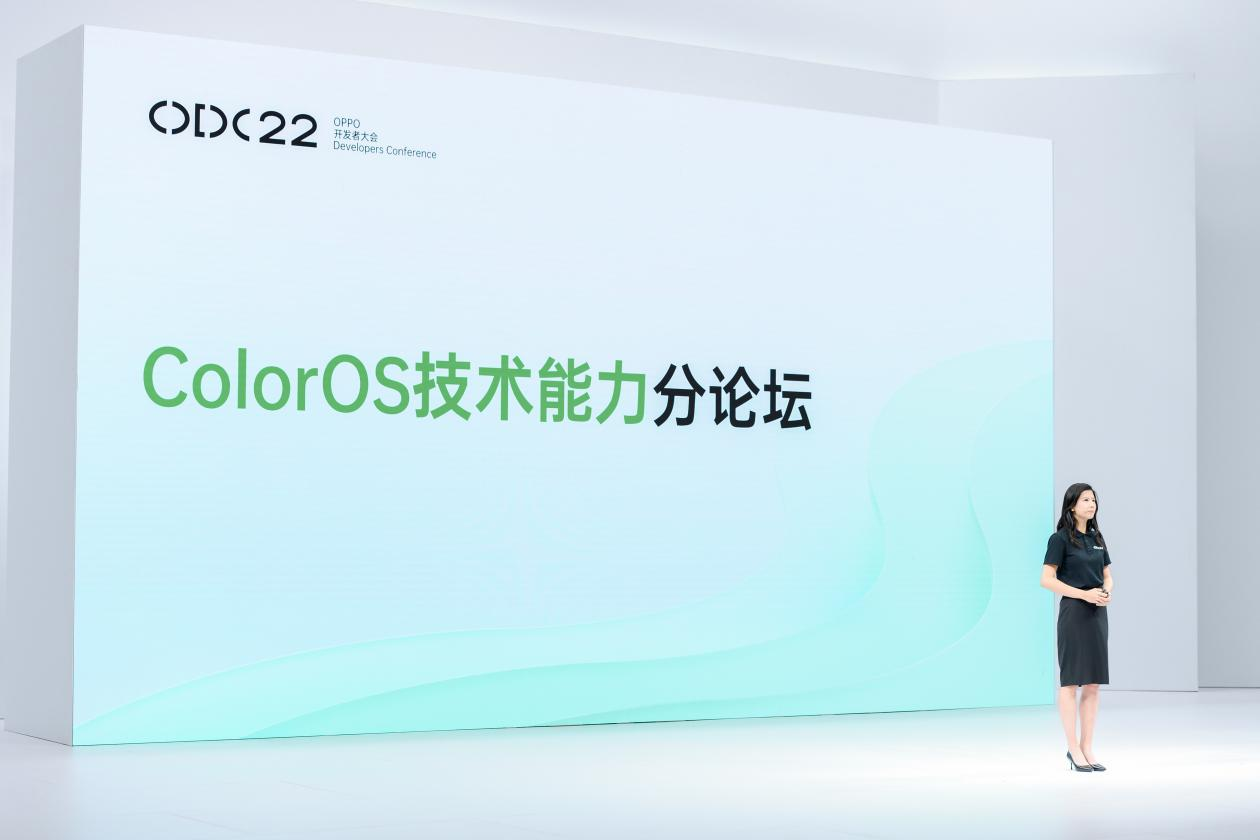Credit: China Visual Group
By Lin zhijia and Shaw Wan
Beijing, September 6 (TMTPOST) -- China’s computing power industry rose to the second in the world last month, after the United States, according to the Ministry of Industry and Information Technology (MIIT). Such growth in information infrastructure came amid the nation’s ambition to develop its digital economy as the tech competition with the U.S. intensifies.
 (相关资料图)
(相关资料图)
“Computing power has become a new key productivity after heat and electricity,” Zhang Mingyun, vice minister of the MIIT, said at the 2022 China Computational Power Conference in August.
With an average growth of over 30 percent in the past five years, Chinese market scale of computing power has exceeded 1.5 trillion yuan ($218 billion) in 2021, the China Academy of Information and Communications Technology (CAICT) estimated.
“China"s computing power industry must strengthen its top-level planning and standardize industrial development. Enterprises can’t just jump on the bandwagon to provide cheap products with low technology,” Wang Endong, member of the Chinese Academy of Engineering said.
Growing Significance
Computing power indicates how fast a machine can process certain data to achieve a specific result. From small components like chips, to mobile phones, laptops and automobiles, computing power has infiltrated into people’s daily life. As a vital part of the information infrastructure, it also powers the Internet, artificial intelligence, Bitcoin, supercomputers, aerospace rockets and the metaverse. Without computing power, software and hardware won’t be able to function.
Computing power is one of the major forces that’s driving the nation’s economy. When 1 yuan ($0.14) is invested in the computing power industry, the nation’s gross domestic product would increase 3 to 4 yuan, according to China Academy of Information and Communications Technology (CAICT).
Due to its strategic importance, the U.S. has been curbing China’s development in this area. The U.S. urged Nvidia and Advanced Micro Devices (AMD), two major chip providers, to stop selling computing chips that can power supercomputers and artificial intelligence to China on Sept. 1 . This is a further step of the U.S. to ban American companies from doing businesses with Chinese companies, since it blacklisted four branches of China’s National Supercomputing Center last April.
“The importance of computing power lies in the fact that it is the core indicator of a country"s competitiveness. It is also a hot sector for medium- and long-term investment,” person familiar with the industry told TMTpost.
The computing power sector has become one of the hottest in the market. Since the end of April, A shares related with computing power have picked up by 26 percent.
“It will take a long time for domestic chips to replace imported products. A comprehensive plan is needed to integrate software ecology, talents, chip performance, and customers’ support,” said Zhao Zhanxiang, partner and chief technology officer of Yunxiu Capital.
Insufficient data centers
Data centers, namely server rooms that house core computing services and infrastructure, are key components of the computing power supply chain, according to Wu Hequan, member of the Chinese Academy of Sciences.
The number of data centers in use in China reached 2,213 in 2019, 12.7 percent of which were of ultra-large and large ones. However, there was still a lot of room for growth, as the U.S. was home to 40 percent of the world’s ultra-large data centers.
In January, a strategy to channel more computing sources from the eastern areas to the less developed western regions was included in the Plan for Development of the Digital Economy During the 14th Five-Year Period. A month later, Chinese authorities approved projects to build eight national computing hubs and 10 national-data center clusters, carrying out the plan to build a national big-data center system in 2025.
“The strategy was meant to utilize the abundant energy sources in the west, such as the reusable ones, to provide low-carbon power at a cheaper price,” Wu said.
Under such plan, 25 new projects have been started, driving an investment of more than 190 billion yuan ($28 billion), according to the National Development and Reform Commission. The investment was expected to grow by over 20 percent per year during the 14th Five-Year Plan (2021-2025).
Enterprises were also jumping on the bandwagon. Chinese tech giants like Alibaba and Huawei and the three state-run telecom operators started to invest in cities including southwestern China’s Chengdu to build new data centers. China Mobile"s data center was estimated to be able to house 1.17 million server racks in 2021, according to the company’s deputy general manager.
Although the nation was developing its computing power sector with full force, Wu worried that the computing power and storage capacity could not be optimally utilized if data centers were mainly built in the west.
“Let’s take Guangdong province as an example. It plans to allocate 30 percent of its data to be processed outside the province. However, the data that’s usually dispatched should be cold data, which accounts for 80 percent of the total amount. Does that mean even if we store 80 percent of data outside the province, the majority is still processed inside?” Wu said. “Another thing is that cities in the east and west are not paired. How can they make the best use of their capacity?” he added.
The construction of China’s computing power network was also restrained by the nation’s management of carbon neutrality and carbon peak. In 2013, Chinese government announced the Dual Control System of Total Energy Consumption and Energy Intensity to build an energy-efficient country. According to Three-year Action Plan for Development of New Data Centers (2021-2023) released in 2021 by the MIIT, the power usage effectiveness of newly constructed large data centers should be lower than 1.3.
Under such plan, leading information technology companies began to deploy liquid cooling technology to improve computing efficiency of data centers while reducing heating consumption.
“Some enterprises and facilities with a small scale, high energy consumption, and slow technological update will fall behind. And products with high power usage effectiveness will become the mainstream,” said Wu Qi, executive dean of Wuxi Institute of Digital Economy.
Unreliable computer first networking
No matter how much money the government and enterprises spent on the infrastructure construction of computing power, their efforts would go down the drain if the computer first networking (CFP) wasn’t well constructed. CFP is a decentralized computing solution that optimizes the efficiency of edge computing. Like the power grid, the high-speed rail network and the communication network, it is a framework that provides services for computational tasks by sharing computing resources from either data centers or edge computing environments.
The current CFP in China was faced with a lack of real-time transmission. In China Baowu Steel Group Corp., Ltd., a state-owned iron and steel company, a large amount of equipment was not connected to a cloud computing environment, according to its chief engineer Chen Weiwei. The protocol was not open, and the connection modules were not rich, which could cost a fortune.
Another challenge was brought by an unstable bandwidth. The Five-hundred-meter Aperture Spherical radio Telescope (FAST), the world’s largest single-dish radio telescope, releases over 2000 TB of data every day to share with the global community. Unfortunately, an unstable bandwidth resulted in a limited transmission speed.
The incompatibility between cloud service providers or the transfer of data from one provider to another was also a headache for Chinese clients. Four Chinese cloud service providers accounted for 80 percent of the market in 2021, according to the China Internet Watch. Alibaba Cloud by the e-commerce giant Alibaba led the sector with a market share of 37 percent, followed by Huawei Cloud, Tencent Cloud and Baidu AI Cloud.
In March 2021, the Postal Savings Bank of China, a state-owned commercial retail bank, issued a pre-purchase announcement, in which only one supplier, an American database management company named Oracle, was mentioned. It had no other way but to continue cooperation with Oracle, instead of Chinese providers, because multiple core production systems used the company’s database, which couldn’t be easily replace by domestic products due to incompatibility.
Liu Yunjie, member of the Chinese Academy of Engineering, believed that a reliable networking solution should have a large bandwidth, low latency and ultra-low jitter. “The lack of a reliable computer first networking can bring troubles, no matter it’s smart healthcare, energy, transportation, or metaverse,” he said.
Such networking is under construction. China launched the China Computing NET-Intelligent Computing Network in June as the first phase of the China Computing NET (C²NET), a national computing power network plan. The computing power network was connected to nine computing centers of the Pengcheng Laboratory, a facility authorized by the Chinese authorities, with over 2,000 peta floating-point operations per second (Pflop/s).
“Building the nation’s computing network is a huge project,” said Deng Taihua, vice president of Huawei.
Inferior domestic alternatives
Chinese products depended heavily on supplies from overseas, which turned out to be an Achilles" heel. The U.S. has been curbing China’s technology development by blacklisting Chinese companies. In 2020 , Washington cut Chinese chipmaker Semiconductor Manufacturing International Corp (SMIC) off from American suppliers and technology. Several Chinese supercomputing entities were also added to economic blacklist last April.
Apart from heavy reliance, domestic alternatives fell behind in terms of performance. High performance computing, the kind of computing that uses supercomputers or data centers to process data at high speeds, represents a nation’s highest standard of computing power. However, Chinese supercomputers have been suppressed by their American rivals. Developed with a self-designed processor, the Sunway TaihuLight was the fasted supercomputer in 2016. It was surpassed by the Summit, a supercomputer developed by IBM in the U.S., two years later. The one topped the list in 2022 was Frontier, co-developed by the U.S. Department of Energy and tech giants AMD and Hewlett Packard Enterprise (HPE). The Sunway ranked the sixth.
Such weakness resulted in foreign brands’ dominance in the Chinese market of software systems, server chips and database. According to China Software Industry Association, the market share of overseas products reached over 90 percent in terms of centralized database software, which allowed information to be accessed from many points while collecting, storing, and maintaining it in a single location. As for the most important chip sector, Intel, AMD and Nvidia won over 85 percent of the market share, leaving little room for domestic chipmakers to survive.
“It’s a matter of software ecosystems. Because foreign software ecosystems like Nvidia and Intel are too strong, it is very difficult for domestic companies to catch up. And in order to do that, it takes a long time and a lot of resources,” Zhao said.
Wei Shaojun, professor of Tsinghua University, believed that the domestic server chips were not good enough to compete in the market. For example, they were not equipped with surface-mount technology, which was common in foreign brands.
“We have spent a lot of efforts onto building an artificial platform, which is not applicable or does not function as well as we have imagined. To put it better, it has not yet met our requirements. It still takes time to wait," Wei said.
关键词: English
































































































 营业执照公示信息
营业执照公示信息